Database Basics for Backend Engineers New to Coding
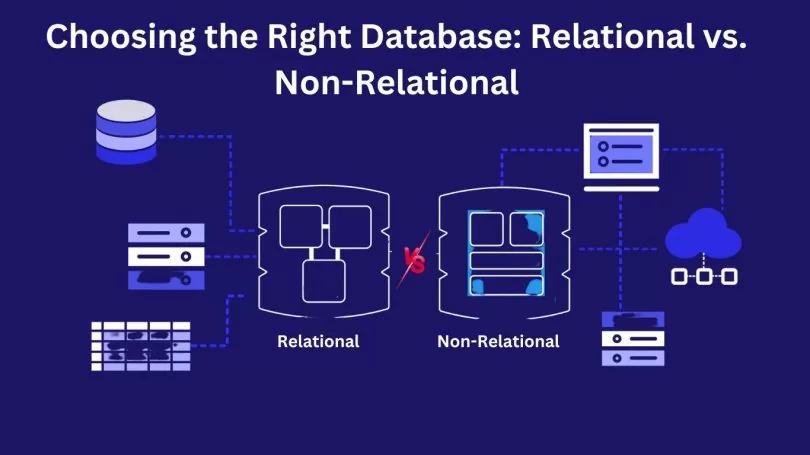
In the world of backend engineering, your knowledge of databases is like a superpower. Whether you’re building a simple blog or a complex scalable application, understanding databases—the backbone for storing, retrieving, and managing data—is critical. But where do you start if you’re new to coding? This comprehensive guide from Madros Technologies is designed just for you. We’ll introduce you to the essentials of relational and NoSQL databases, explain their differences, and share tips on choosing the right technology for your backend projects.
And if you’re ready to take your skills to the next level and earn a professional certification, check out our training courses at Madros Technologies courses. Want more insights? Don’t forget to subscribe to our weekly newsletter here. If you have questions along the way, you can always reach out on our Contact Us page. Let’s get started.
Why Should Backend Engineers Care About Databases?
When you begin backend development, your job goes far beyond writing neat lines of code. You build systems that persist data — everything from user profiles to financial transactions, product inventories, or blog posts needs to be stored safely and accessed swiftly. Databases are the engines running under the hood.
Learning databases will:
- Enable data storage and retrieval efficiently.
- Help you design scalable applications that handle growing data and traffic.
- Improve your problem-solving skills by understanding data structures and queries.
- Make you a more competitive backend engineer in today’s job market.
At Madros Technologies, we focus on giving you not just theoretical knowledge but practical, hands-on skills to land and excel in your backend engineering career.
Understanding Relational Databases
Relational databases have been a core part of software architecture for decades. They organize data into tables with rows and columns — much like a spreadsheet. Each table typically represents one data type (e.g., users, products), and these tables can be linked using keys, which gives rise to the term relational.
Key Concepts:
- Tables: Store data in rows (records) and columns (fields).
- Primary Keys: Unique identifiers for records.
- Foreign Keys: Link rows between tables.
- SQL (Structured Query Language): The language used to manage and query data.
Common Relational Databases:
- MySQL
- PostgreSQL
- Microsoft SQL Server
- Oracle Database
Relational databases work best when you need to maintain strict data consistency and complex relationships—think of a banking application or inventory management where every action must be accurate and traceable.
Introduction to NoSQL Databases
NoSQL databases emerged to meet the demands of modern, large-scale applications that require flexibility and speed beyond what traditional relational models can offer. They don’t rely on a tabular schema. Instead, they store data in formats like documents, key-value pairs, wide-columns, or graphs.
Types of NoSQL Databases:
- Document Stores: Store data as JSON or BSON documents (e.g., MongoDB, CouchDB).
- Key-Value Stores: Simple, scalable storage of key-value pairs (e.g., Redis, DynamoDB).
- Wide-Column Stores: Similar to relational but more flexible, handling massive data (e.g., Cassandra).
- Graph Databases: Specialized in handling data relationships (e.g., Neo4j).
NoSQL databases shine with large datasets, high traffic, and distributed systems where flexibility and performance matter more than rigid consistency.
Choosing Between Relational and NoSQL Databases
When deciding between relational and NoSQL databases, several key factors come into play.
Schema Structure: Relational databases use a fixed schema with defined tables and columns, which means your data needs to conform to a strict structure. In contrast, NoSQL databases offer flexible or schema-less designs, allowing you to store data in more varied formats without a rigid structure.
Data Relationships: Relational databases excel at managing complex relationships through joins and enforcing data integrity. NoSQL databases typically have limited join capabilities and often store denormalized data, which can simplify development at the cost of some redundancy.
Scalability: Relational databases usually scale vertically, which means upgrading your server hardware to handle more load. NoSQL databases are designed for horizontal scaling, allowing you to add more servers to distribute the data and traffic.
Use Cases: Relational databases are a top choice for applications requiring strong consistency and complex transactions, such as financial systems, customer relationship management (CRM), inventory tracking, and enterprise resource planning (ERP). NoSQL databases, meanwhile, are preferred for use cases like real-time analytics, IoT applications, and social networks, where speed and flexibility are critical.
Query Language: Relational databases use SQL—a powerful and standardized language—with a wide range of capabilities. NoSQL databases use various querying methods depending on the type, such as JSON-style queries for document stores, key lookups for key-value stores, or specialized graph queries.
How to Start Working with Databases as a Beginner Backend Engineer
Step 1: Learn the Basics of SQL
Focused learning on SQL allows you to create, read, update, and delete data—crucial skills for any backend engineer working with relational databases.
- Master simple queries (
SELECT,INSERT,UPDATE,DELETE). - Understand table creation and schema design.
- Practice JOIN operations for relating data.
Step 2: Experiment with NoSQL Databases
Try setting up document stores like MongoDB; work with key-value databases like Redis for caching. Get comfortable with their query patterns and data models.
Step 3: Build Small Projects
Experimentation is the best way to learn. Build mini backend applications like:
- A task manager with relational DB.
- A blog system with MongoDB.
- A cache system using Redis.
This hands-on approach cements theoretical knowledge and builds confidence.
Real-Life Applications and Why These Skills Matter
Whether you aspire to work in startup environments or large enterprises, knowing how to work with databases is a fundamental skill. Companies look for engineers who can:
- Design database schemas that prevent redundant or inconsistent data.
- Optimize queries to enhance performance.
- Implement data replication and backups for reliability.
- Use NoSQL or relational databases based on business needs.
Learning these skills positions you as a valuable asset in backend development teams.
Professional Certification at Madros Technologies — Your Pathway to Success
If you want to go beyond basic concepts and gain industry-recognized certification, Madros Technologies offers comprehensive backend development and database courses tailored for newcomers.
Why choose our certifications?
- Hands-on Labs: Learn by doing real-world projects.
- Expert Instructors: Guidance from industry professionals.
- Flexible Learning: Courses designed for working professionals and beginners.
- Certification: Validate your skills and stand out to employers.
Explore the full range of backend and database courses at https://www.madrostds.com/courses.
Have Questions? We’re Here to Help
Starting out in backend engineering may feel overwhelming, but you’re not alone. Our team at Madros Technologies is ready to answer your queries anytime. Whether it’s about course content, certifications, or practical usage of databases, drop your questions on our Contact Us page.
Don’t Keep This to Yourself — Share the Knowledge!
Learning is more rewarding when shared. Know someone who’s also diving into backend development? Share this guide and help them kickstart their journey with confidence.
Want More Insights and Tips? Subscribe to Our Newsletter!
Stay updated with the latest in backend development, databases, and certification opportunities by subscribing to our weekly newsletter. Packed with tips, tutorials, and industry insights — it’s a fantastic resource for learners at every stage.
Subscribe now at Madros Newsletter.
Wrapping Up
Mastering the basics of relational and NoSQL databases sets the foundation for a successful career as a backend engineer. Whether you’re new to coding or enhancing your skills, understanding when and how to use each type of database empowers you to build scalable, robust applications.
At Madros Technologies, we are passionate about helping you grow from beginner to certified professional. Begin your learning journey, gain hands-on experience, and earn certifications that open doors in the tech industry.
Visit https://www.madrostds.com/courses and start transforming your future today!
Happy coding and database building!
If you found this content useful, please do well to share:
Blog Search
Latest Posts
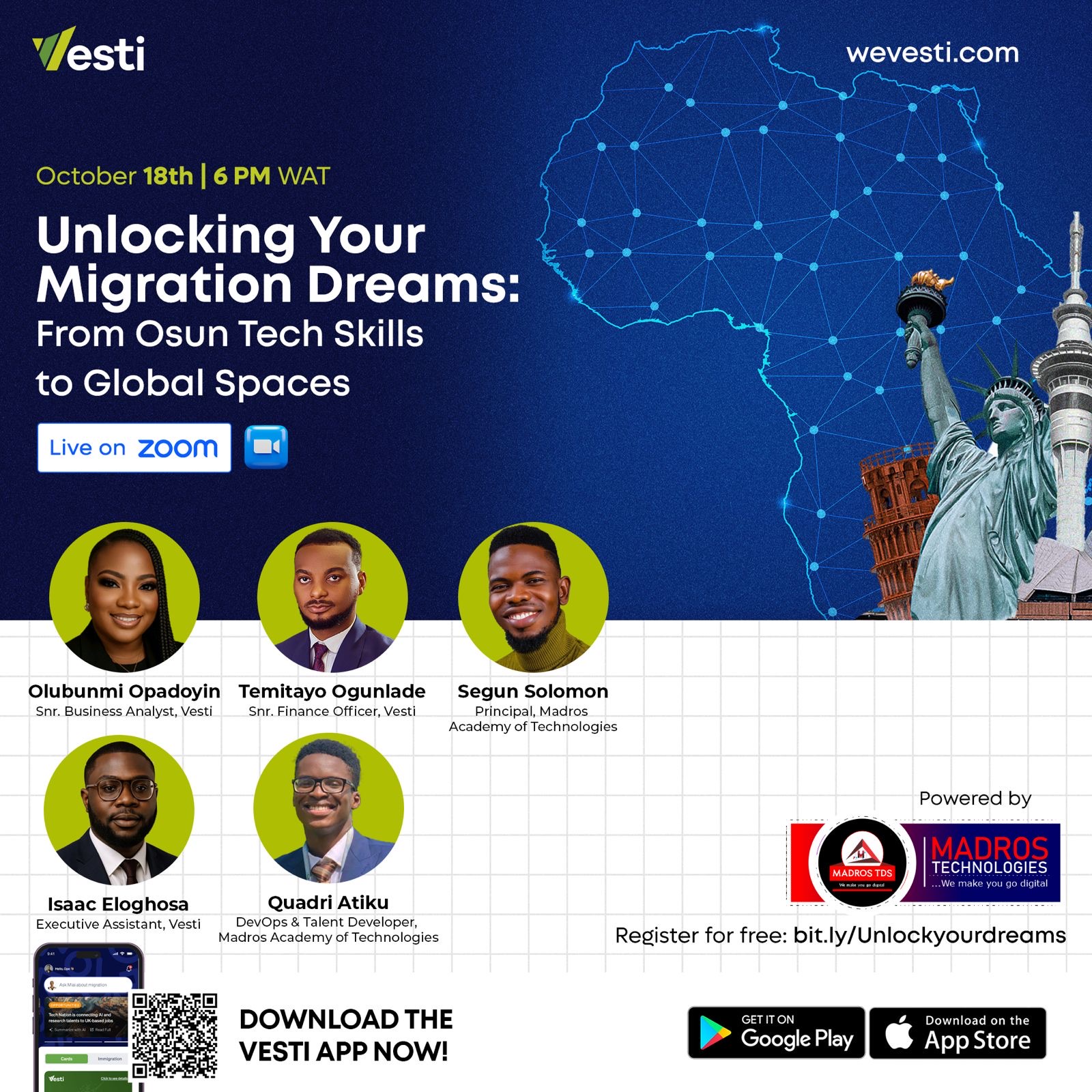
Unlocking Your Migration Dreams: From Osun Tech Space to Global Spaces
October 13, 2025Gain visa insights, tech skills, & funding for global success. Join Our Webinar with VESTI on October 18th and unlock your migration dreams for a global fut
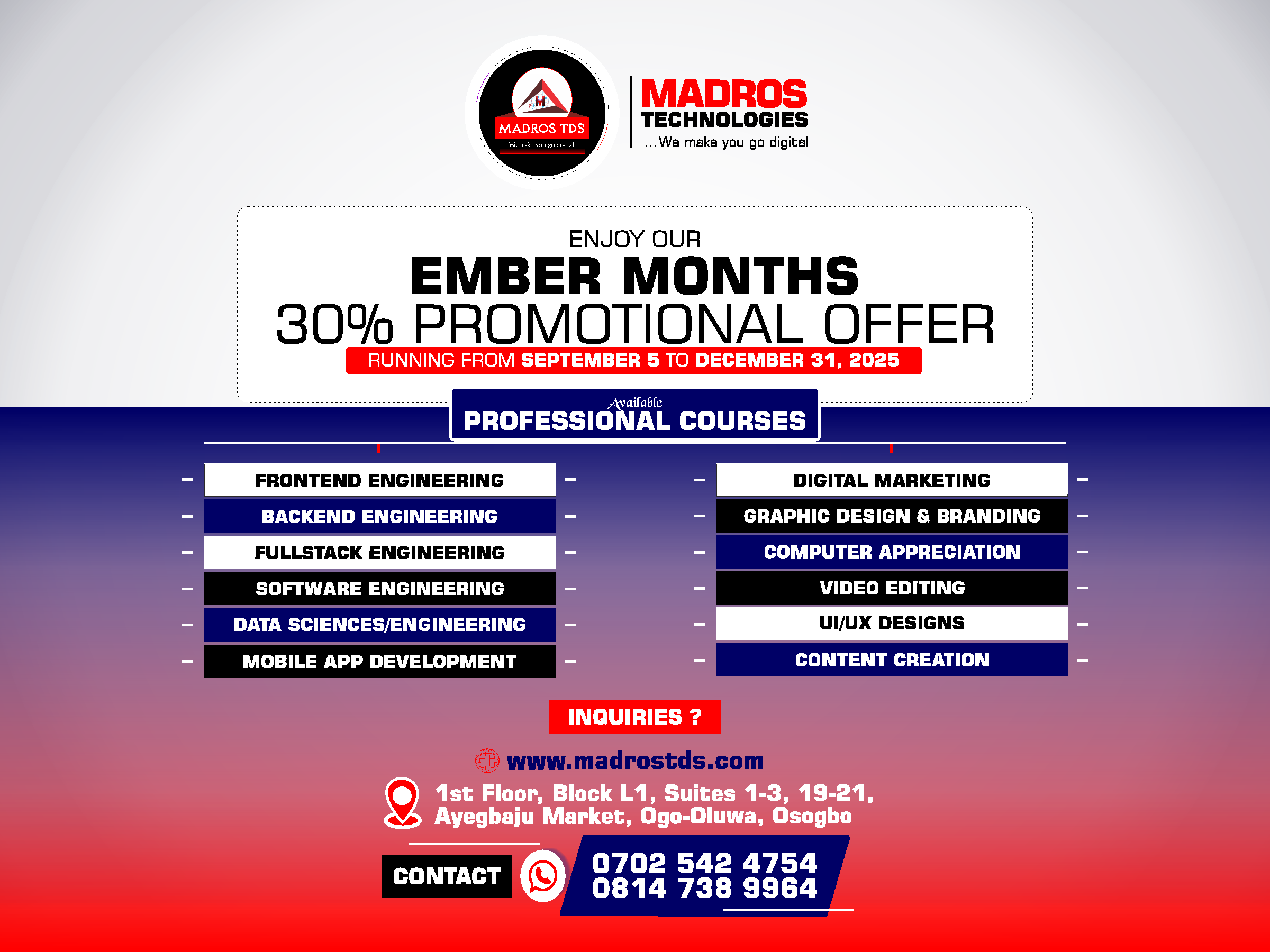
Unlock Your Tech Future: Seize a 30% Discount on Professional Tech Courses at Madros Technologies!
September 6, 2025Ready for a career change? Madros Technologies offers 30% OFF expert-led tech training. Master in-demand skills like Software Engineering, Digital Marketing, Da
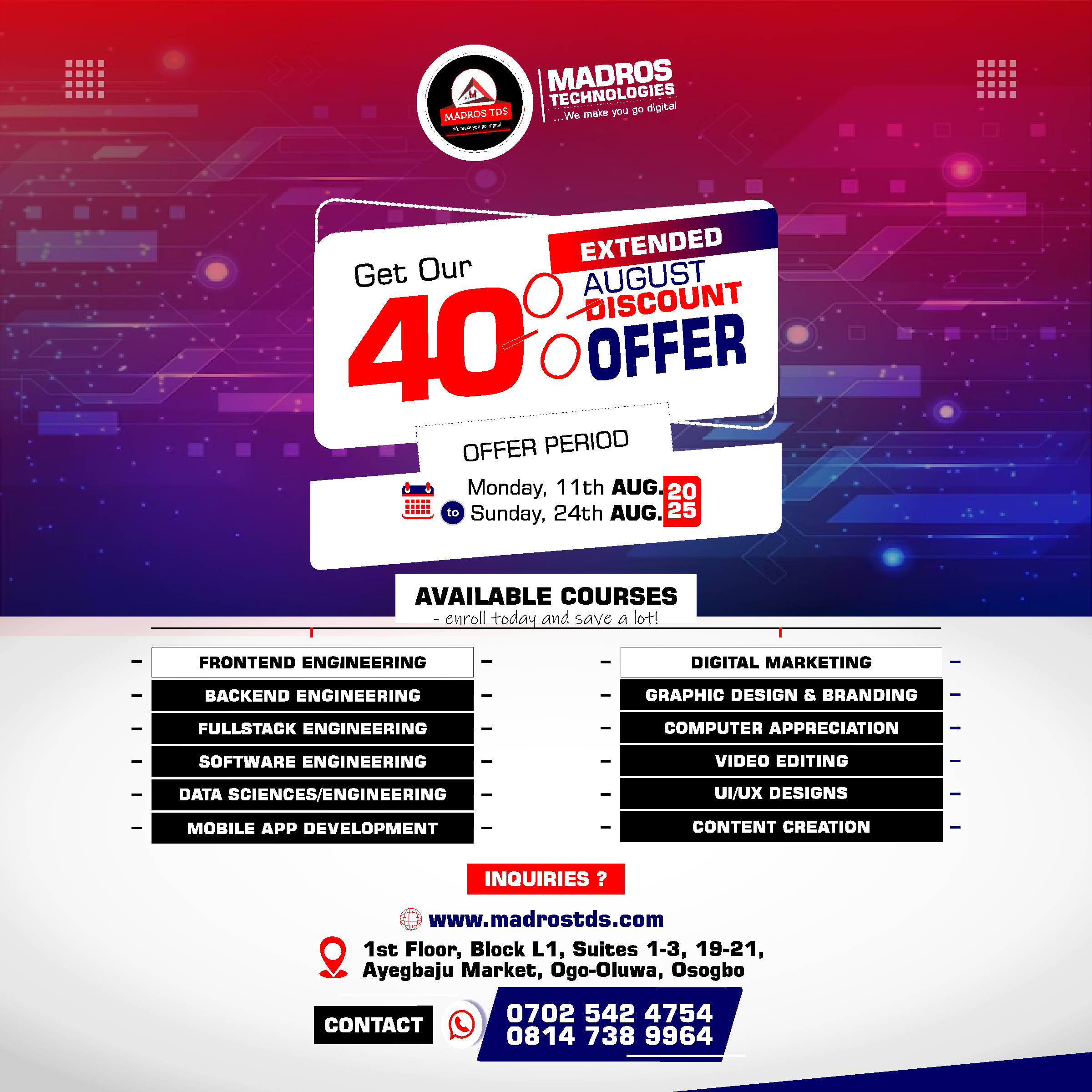
Quick Window Offer: Extended August Discount Offer – Your Tech Dreams, 40% Off!
August 12, 2025Transform your future with 40% off Madros Technologies courses! Gain job-ready skills in coding, design, and digital marketing fields. This is an extended disco
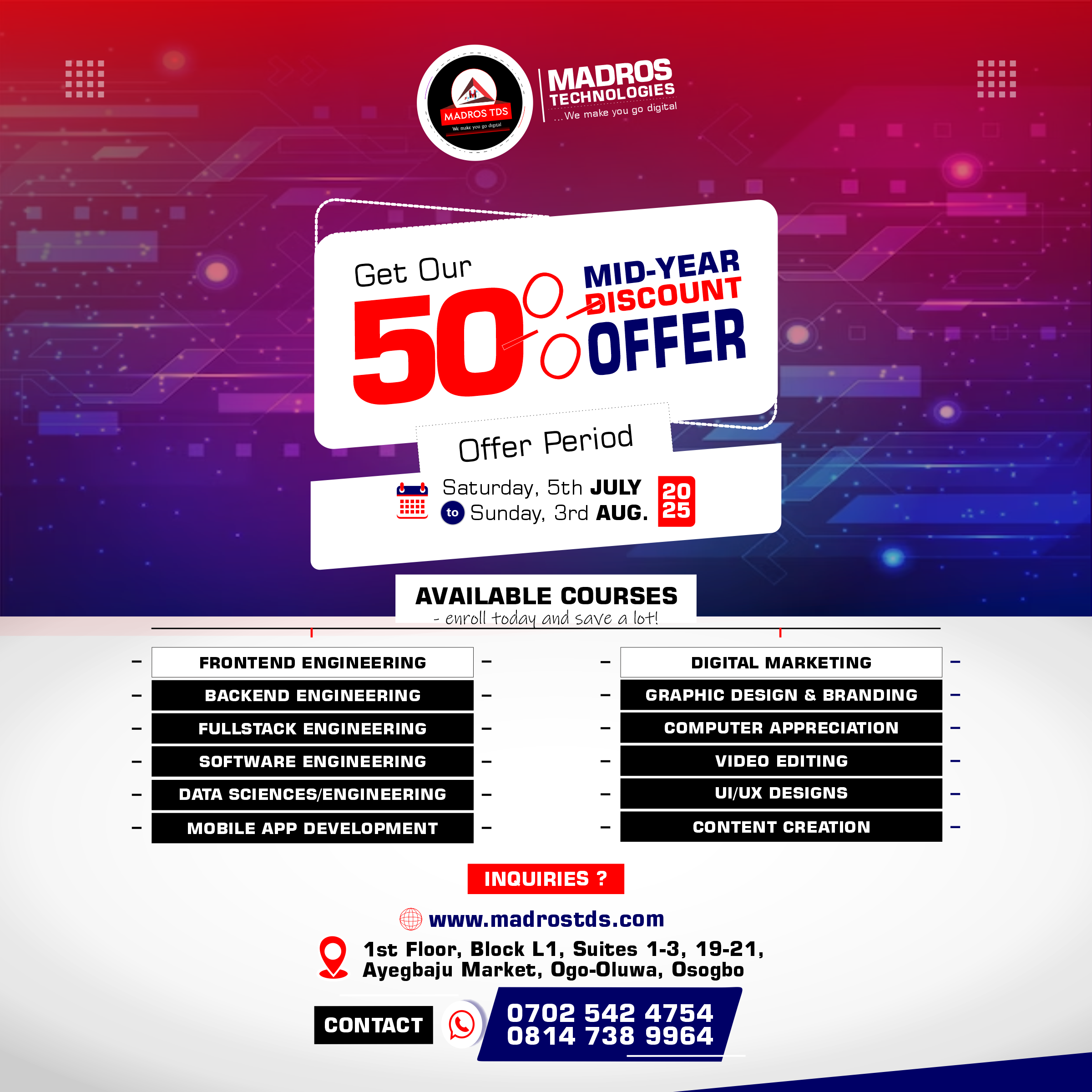
Your Tech Dream: Closer Than You Think (And Half Off!)
July 5, 2025Unlock your tech potential with Madros Technologies! Get 50% off cutting-edge courses & transform your future. Your dream career starts here.
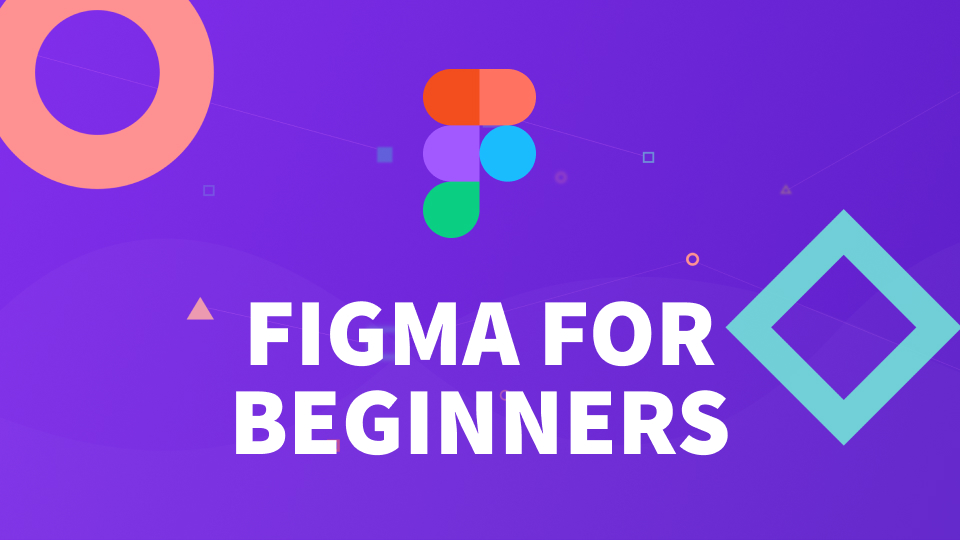
Using Figma: Tutorial for Beginner Product Designers
June 7, 2025A beginner’s walkthrough of Figma for prototyping and design collaboration
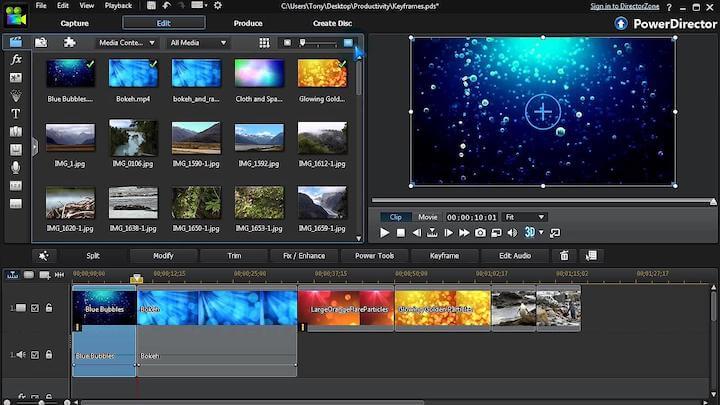
Top 5 Video Editing Software for Beginners
June 7, 2025Discover the best tools for newbie editors to create stunning videos easily
